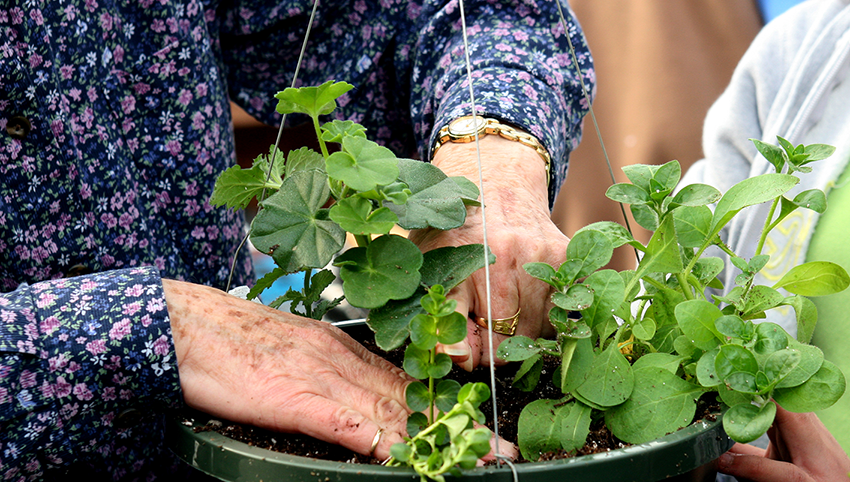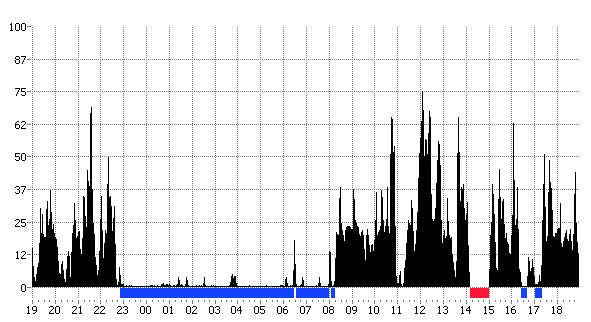Vivago solution monitors activity, sleep and circadian rhythm

Sleep is vital for health and wellbeing
Usually, the amount of sleep needed does not reduce by age but stays the same throughout out adult lives. When the person grows older, the sleep becomes lighter, more fragmentary and of varying quality. Sleep disorders typically become more common as a person ages. Elderly people also sleep more fragmentarily than young people, and going to bed early can cause them to wake up early. Sleep deficit has a negative impact on hormonal balance, immune system and metabolism. Sleep reflects the person's wellbeing and sleeplessness is also a typical symptom of stress.
About 40–70% of the elderly suffer from chronic sleep disorders but 50% of these cases are not observed in connection with normal healthcare. A regular circadian rhythm and quality sleep is essential for the wellbeing of the elderly. Continuous monitoring of the circadian rhythm is a useful method and tool in the care work of the elderly.
Sleep disorders cause weakened functional capacity and issues in wellbeing
- Reduced energy during daytime and increased tiredness
- Increased risk of a fall or an accident
- Reduced opportunity for independent living
- General wellbeing endangered
- Increased need for chronic sleeping medication

Vivago – clinically validated measuring technology
Vivago has its own protected algorithms for activity monitoring and automatic alarms. Vivago's sleep, activity and circadian rhythm measurements are also clinically validated. The extensive knowledge on activity monitoring, wellbeing measurement and individual safety solutions create the basis for an innovative and continuous development of solutions. Vivago's technology is patented.
Vivago solution measures activity levels, sleep and circadian rhythm
- Vivago solution measures the amount and quality of sleep
- Specific information on the circadian rhythm and its development
- Daily activity measurement
- Monitoring of time spent outdoors
- Monitoring of sleep and activity trends
- Monitoring of the utilisation rate of the watch, i.e. information on whether the watch is being worn and the user is within the sphere of care
- Number of alarms can be monitored
Read more about Vivago's activity information
Vivago's measuring of activity data – Indicators of circadian rhythm, sleep and activity
Many of the changes in functional capacity are reflected in the human circadian rhythm and sleep and, therefore, in the activity data. Analysis of wellbeing data is an efficient tool for detecting problems, assessing treatment and measuring its effectiveness once the actual diagnosis has been made.
Read more about Vivago's customer references
Case: Rehabilitation without medication – Lisa’s condition and functional capacity improved
Lisa is an 80-year-old woman who lives independently at home, helped by her daughter and home care. Lisa suffers from memory loss and as her memory disorder progresses, her circadian rhythm has taken a turn for the worse: she sleeps in the afternoons and stays awake at night. Lisa’s functional capacity and her ability to manage her own affairs have deteriorated.
Case: Monitoring the effectiveness of a medication change on Parkinson’s disease – Jack; once bedridden, now moves about on his own
Jack, an 81-year-old man, suffers from Parkinson’s disease. Jack lives in a sheltered housing unit. He needs a lot of help to get around and to get things done.
Case: Insulin shock – Ann was saved by an automatic alarm
Ann lives in sheltered housing. She is 77 years old and suffers from diabetes, which is treated with insulin. During the night, her blood sugar levels dropped and she lost consciousness in her sleep.
Case: Monitoring bipolar disorder – Monitoring of functional capacity improved George’s quality of life
George is an 81-year-old man who lives at home and suffers from bipolar disorder. A regular rhythm of life, identification of predictive symptoms and timely intervention are important in this disease.
Case: Terminal care – Activity data made it possible to relieve Alison’s pains
Alison, who lived in a care home, had lung cancer. It was her wish that her terminal care should take place in the care home where she lived. As her disease progressed, she was no longer able to vocalise when she was in pain. The pain was clearly visible on the activity chart.
Read more about Vivago's clinical cases
WristCare at Tameside
Changes in sleep, circadian rhythm and activity levels weakens the wellbeing of the elderly. Weak circadian rhythm increases the risk of falls.
Telemetric activity monitoring as an indicator of long-term changes in health and wellbeing of older people
Analysing the wellbeing, activity and sleep is a valid tool in measuring the changes in health and wellbeing of the elderly.
Differences in light sleep and deep sleep measured with IST Vivago® wrist care
The clinical Vivago solutions measure the quality and amount of sleep.